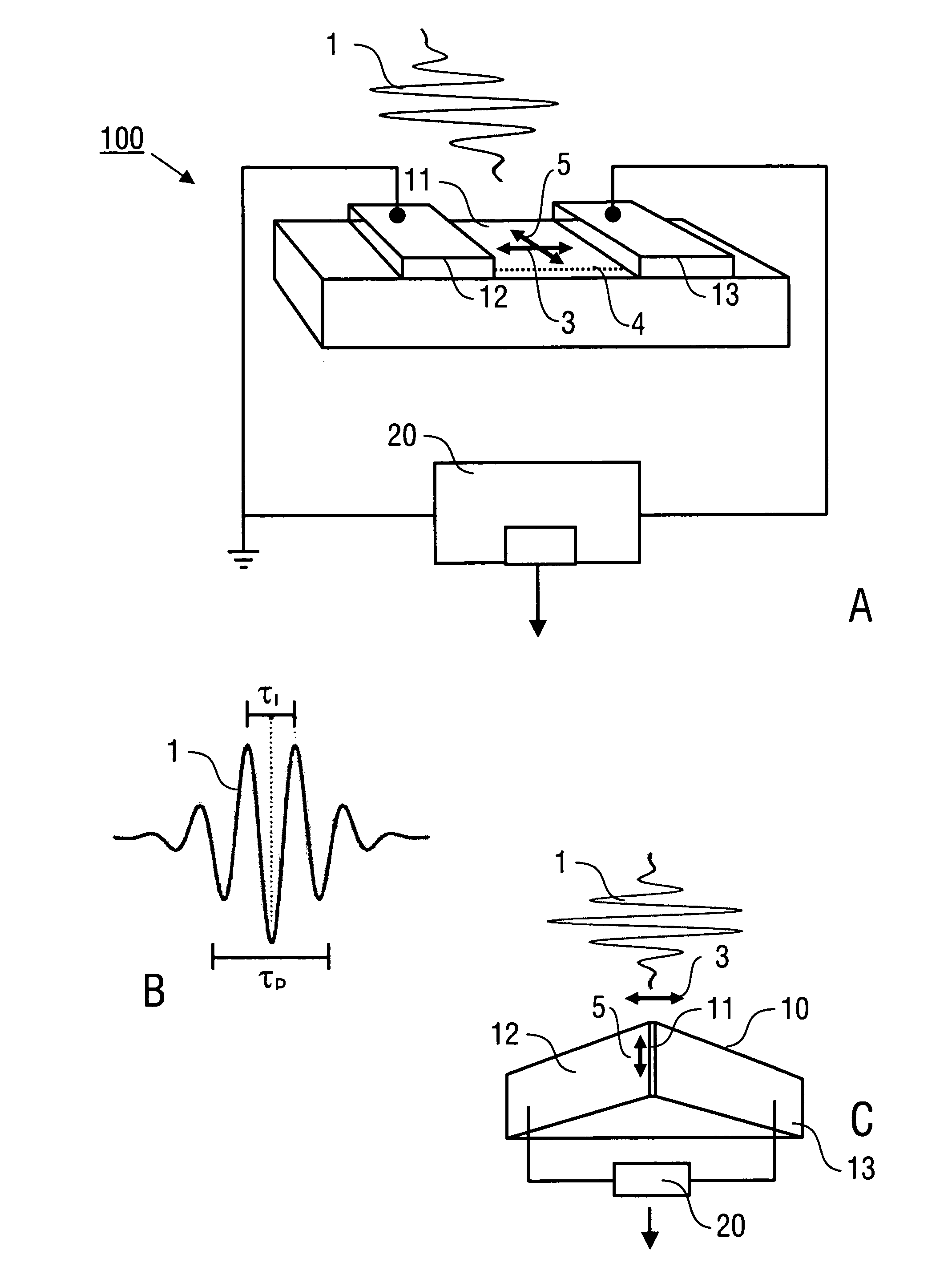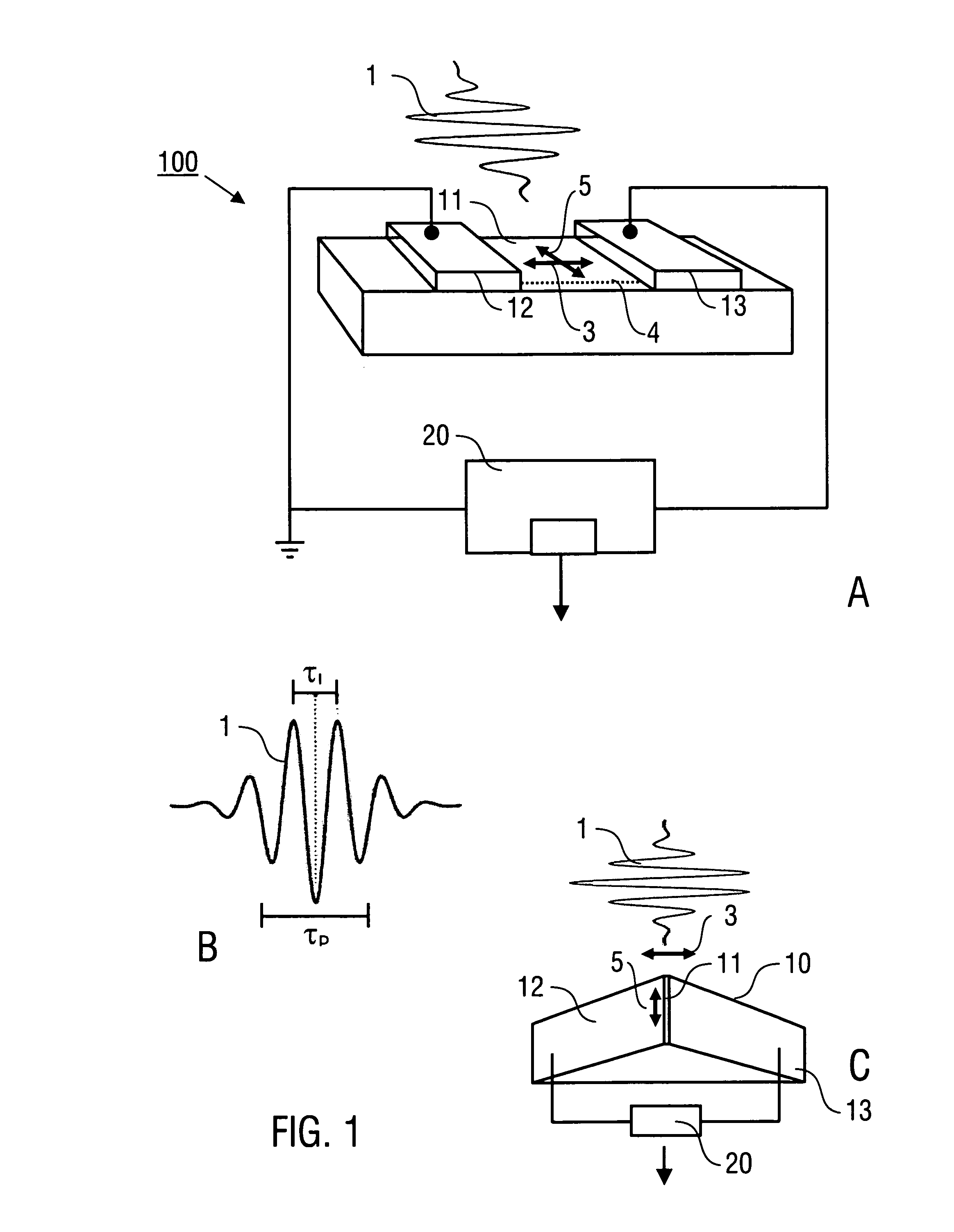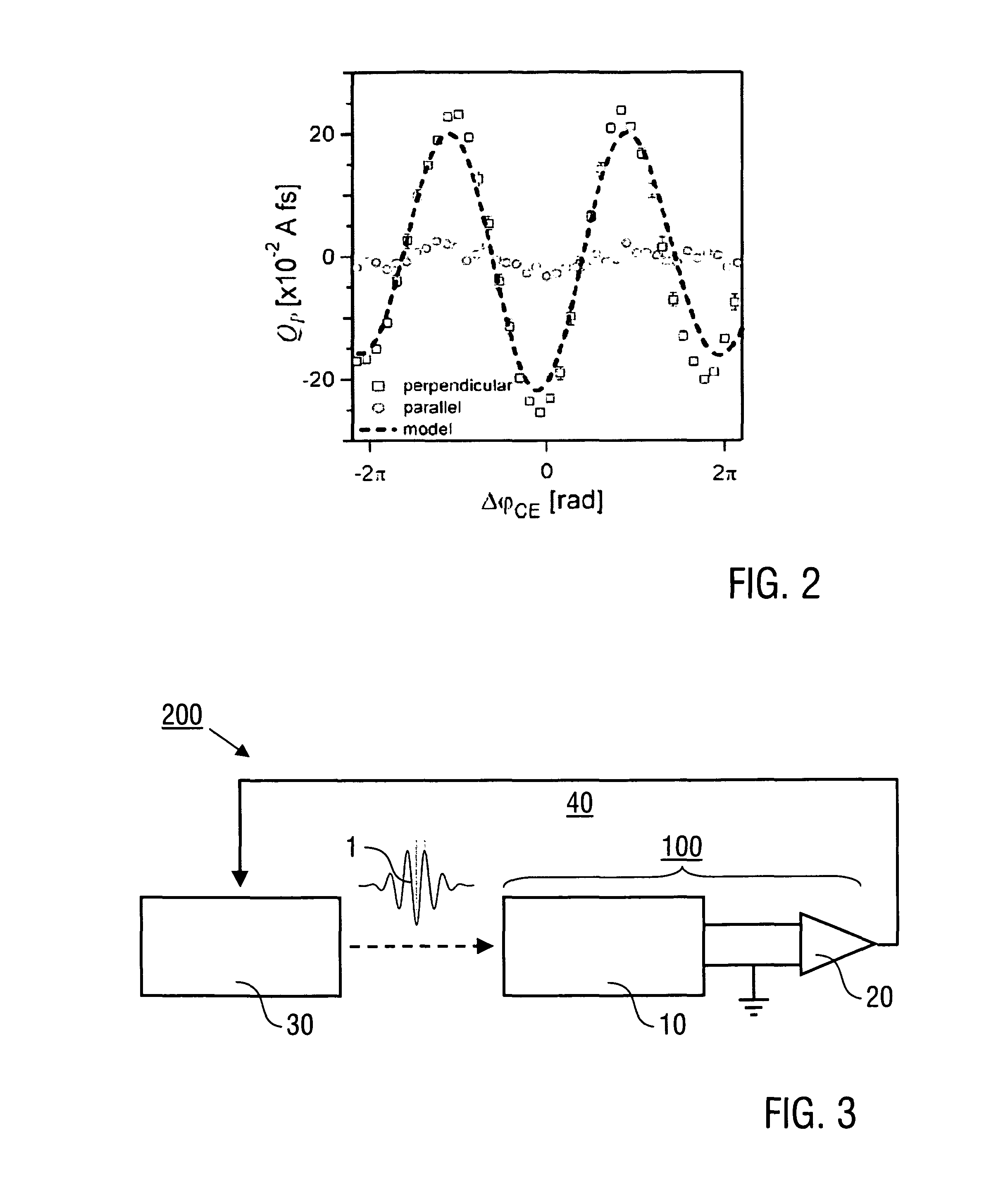Opto-electronic device and pulse processing method
a pulse processing and optoelectronic technology, applied in the field of optoelectronic devices, can solve the problems of complex optical and electrical setup, inability to process signals above frequencies in the upper thz range and up to phz range, and disadvantages of conventional stabilization laser sources based on the above approaches, so as to avoid disadvantages of conventional techniques , avoid disadvantages of conventional techniques
- Summary
- Abstract
- Description
- Claims
- Application Information
AI Technical Summary
Benefits of technology
Problems solved by technology
Method used
Image
Examples
Embodiment Construction
[0060]Embodiments of the invention are described in the following with exemplary reference to the figures which schematically show in particular the photoconductor device with electrical sensor contacts. It is emphasized that the implementation of the invention is not restricted to the illustrated embodiments, but is rather possible with other designs providing a sensor section exposed for an irradiation with laser pulses. In particular, the size and shape of the photoconductor device can be selected in dependency on the particular conditions of using the invention. Furthermore, the implementation of the invention is possible by integrating the optoelectronic device into an optical set-up as it is known from conventional pulse laser techniques.
[0061]FIG. 1A shows a first embodiment of an opto-electronic device 100 including a photoconductor device 10 with a sensor section 11 and electrical sensor contacts 12, 13 (collecting electrodes), and a signal processing device 20 which is con...
PUM
 Login to View More
Login to View More Abstract
Description
Claims
Application Information
 Login to View More
Login to View More - R&D
- Intellectual Property
- Life Sciences
- Materials
- Tech Scout
- Unparalleled Data Quality
- Higher Quality Content
- 60% Fewer Hallucinations
Browse by: Latest US Patents, China's latest patents, Technical Efficacy Thesaurus, Application Domain, Technology Topic, Popular Technical Reports.
© 2025 PatSnap. All rights reserved.Legal|Privacy policy|Modern Slavery Act Transparency Statement|Sitemap|About US| Contact US: help@patsnap.com



